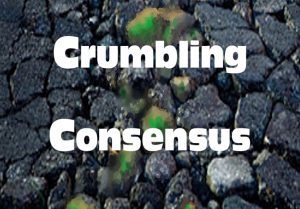Media And The Game Of Climate Change Denialism
…Polar bear habitat message for the year end: 2016 Arctic ice extent same as 2010
According to NSIDC daily sea ice interactive graph, there was ever so slightly more ice on 31 Dec 2016 than on that date in 2010. However, the corresponding ice maps show just how differently that ice was distributed.

Recall that in 2010, there was no huge die-off of polar bears attributed to reduced amounts of sea ice in the fall (or to reduced ice in summer, for that matter) because there was no catastrophic die-off at all.
NSIDC Masie ice charts show just how different the distribution of ice was in 2010 at 31 December compared to 2016 at the end of the year (2010, Day 365).
Here is 2010 at day 365 (extent 12.9 mkm2):

For some reason, Masie ice images were unavailable for the last day of the year but below is the one for the next day (2017, Day 1), 1 January 2017 (also 12.9 mkm2):

Compared to the 2010 map above, there is much more ice this year in eastern Canada than in 2010, much less in the Barents Sea north of Norway.
Take-home message: Absolute extent numbers don’t tell the whole story about polar bear habitat changes from year to year.
…Crumbling ‘Consensus’: 500 Scientific Papers Published In 2016 Support A Skeptical Position On Climate
Climate science is supposed to be settled, right?
We are told that there is an overwhelming agreement, or consensus, among scientists that most weather and climate changes that have occurred since the mid-20th century have been caused by human activity — our fossil fuel burning and CO2 emissions in particular. We are told that natural mechanisms that used to dominate are no longer exerting much of any influence on weather or climate anymore. Humans predominantly cause weather and climate changes now.
For example, we are told that extreme weather (hurricanes, droughts, floods, storms) frequencies and intensities have increased since about 1950 primarily due to the dramatic rise in anthropogenic CO2 emissions since then. Humans are now melting glaciers and ice sheets and (Arctic) sea ice at an alarmingly accelerated rate — reminiscent of an impending “death spiral“. Humans now heat up and acidify the oceans down to depths of thousands of meters by burning fossil fuels. Humans are now in the process of raising sea levels so that they will catastrophically rise by 10 feet in the next 50 years. Because of our CO2 emissions, humans are now endangering the long-term survival of 100s of thousands of animal species (especially polar bears), and climate models say we will cause a million species extinctions over the next 33 years with our CO2 emissions. The Earth is even spinning slower, or faster, no, slower, well, faster — due to human activities. Again, this is all settled science. Only those who possess the temerity to deny this science (“climate deniers”) would disagree, or refuse to believe.
But what if much of what we have been told to believe is not actually true? What if scientists do not overwhelmingly agree that humans have dominated (with ~110% attribution) weather and climate changes since about 1950, which is what we have been told by the UN IPCC? What if scientists do not overwhelmingly agree that natural factors exert effectively no influence on weather and climate changes anymore — now that humans have taken over?
These are compelling questions. Because in 2016 alone, 500 peer-reviewed scientific papers published in scholarly journals seriously question just how settled the “consensus” science really is that

